In Praise of Target’s New Gender-Neutral Home Line for Kids
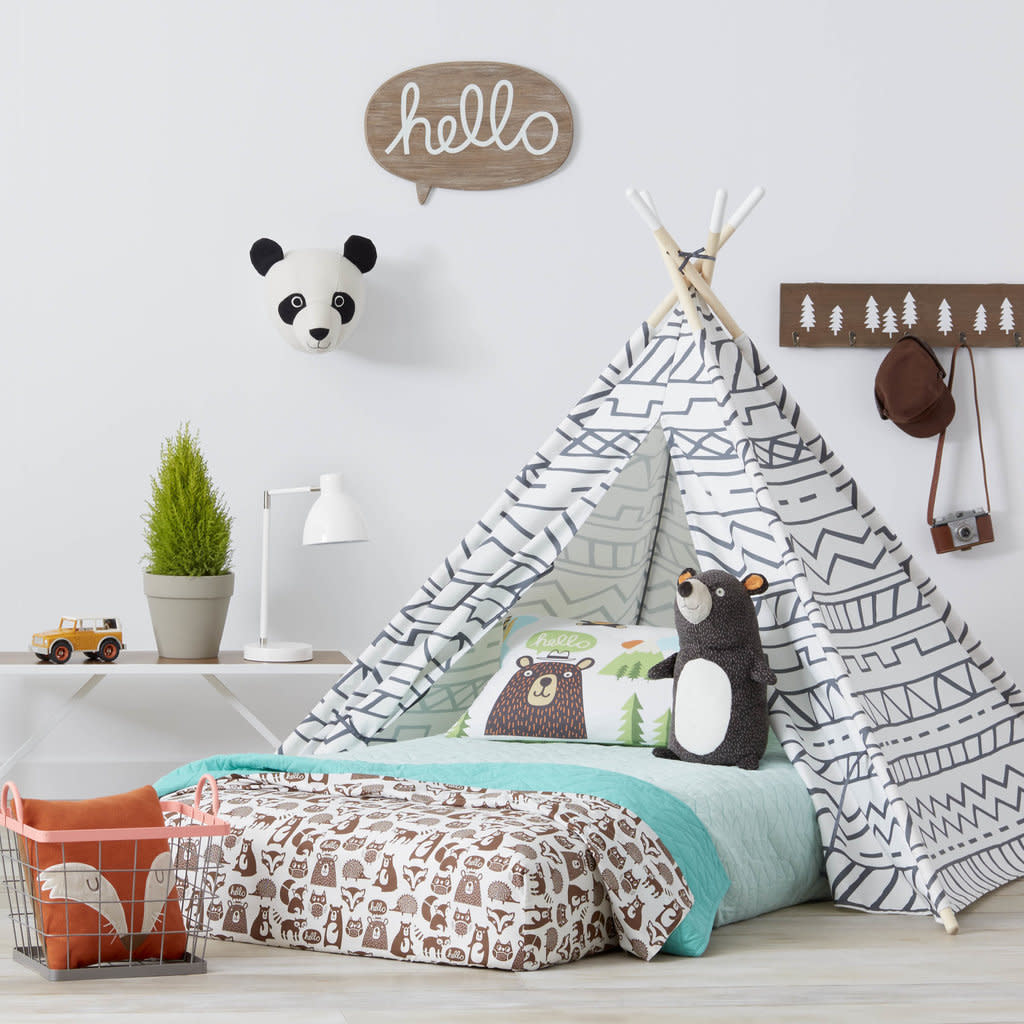
Target is launching a new line of children’s home goods that doesn’t identify pink items as girls’ or blue as boys’ because, as a company rep said, “We really wanted to develop a collection that would be universal,” and asked, “Who are we to say what a child’s individual expression is?”
Pillowfort — the line launching Feb. 21 featuring 1,200 pieces of bedding, wall decor, accent pillows, rugs, lamps, and furniture — will still offer pink and blue, only in fewer quantities compared with new items, many of which are white, black, and yellow, featuring prints that skew gender-neutral such as trees, arrows, astronauts, and bicycles. Evaluating the products currently in stores, Julie Guggemos, Target’s senior vice president of design and product development, told the Star-Tribune in Minneapolis (where Target has its headquarters), that “it was an aisle of pink, fairy princesses, ponies, and flowers. And for the boys it was rockets and dinosaurs. Well, you know what? Girls like rockets and basketball. And boys like ponies.”
Story: The One Word Teachers Can Say to End Gender Stereotyping
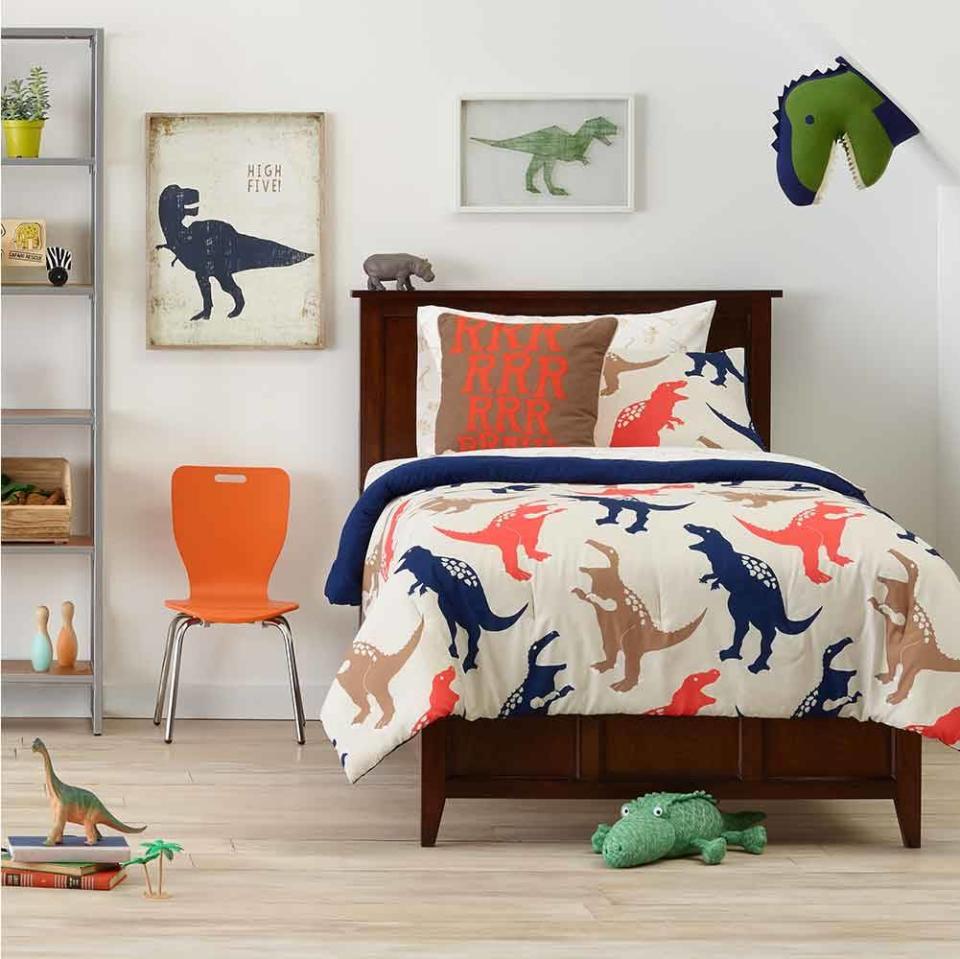
Photo: Target
Story: The Baby Name Trend That’s on the Rise
The company (which took down the “boys” and “girls” signs in its toy and kids’ bedding aisles last fall) checked in with its customers when considering how to replace the in-house brand Circo and reportedly initially didn’t have gender-neutral themes in mind. “Target’s design team spent time with our guests — moms, dads, and, most importantly, kids — to find out what makes them tick,” according to a statement from the retailer on Sunday about the line. And while polling parents and kids, the demand for gender-neutral products kept coming up, reports the Star-Tribune. Asked to pick favorite patterns at a kids’ fair, Guggemos explained, “Girls were picking prints that the boys picked, and vice versa. They’re not afraid to express who they are. We picked up on that right away and decided we were getting in our own way a little bit with some of those paradigms. … It’s time to change.”
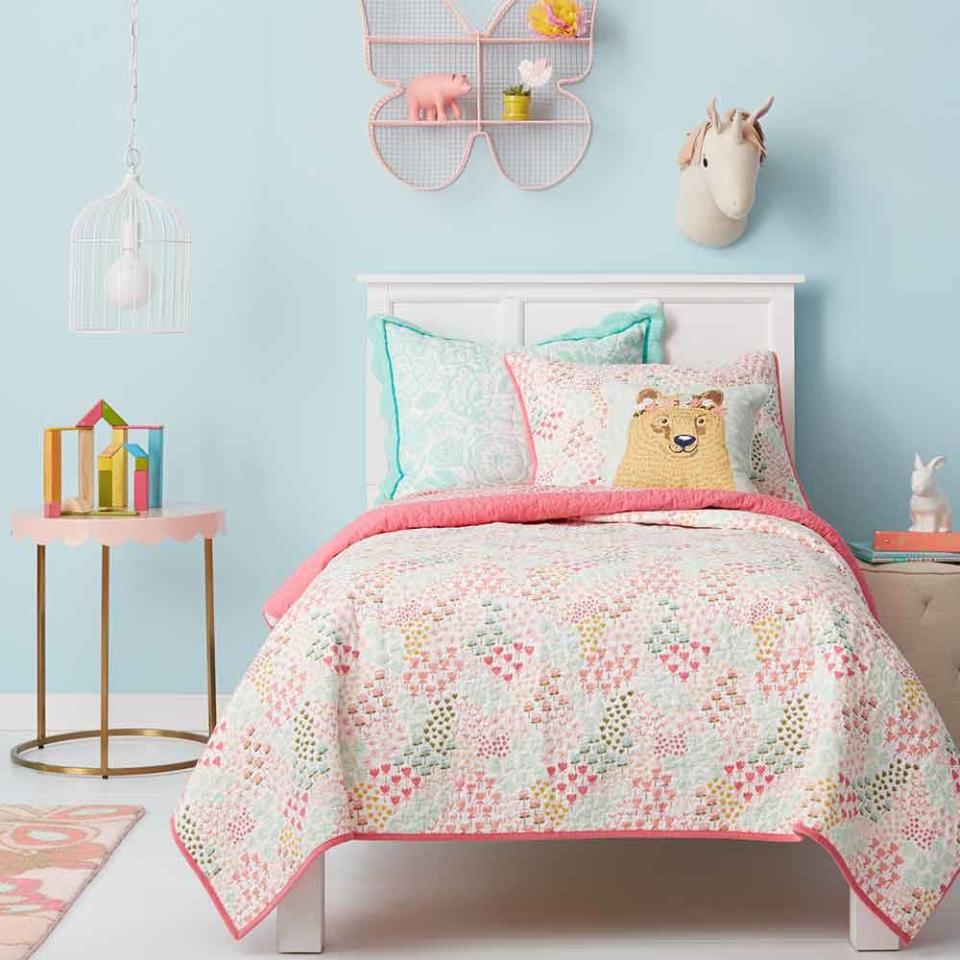
Photo: Target
Pink wasn’t even considered a feminine color before the 1940s, according to Jo B. Paoletti, a historian at the University of Maryland and author of Pink and Blue: Telling the Girls From the Boys in America. Children used to wear white dresses until age 6, Paoletti told Smithsonian magazine: “What was once a matter of practicality — you dress your baby in white dresses and diapers; white cotton can be bleached — became a matter of ‘Oh my God, if I dress my baby in the wrong thing, they’ll grow up perverted.’” Smithsonian reports that “the two colors were not promoted as gender signifiers until just before World War I — and even then, it took time for popular culture to sort things out.”
Sharing a quote from the trade publication Earnshaw’s Infants’ Department in 1918, Smithsonian notes that the magazine detailed how “the generally accepted rule is pink for the boys, and blue for the girls. The reason is that pink, being a more decided and stronger color, is more suitable for the boy, while blue, which is more delicate and dainty, is prettier for the girl.” Manufacturers and retailers promoted relegating a color to a gender in order to sell more, according to Paoletti, who said the pink and blue designations “could have gone the other way.”
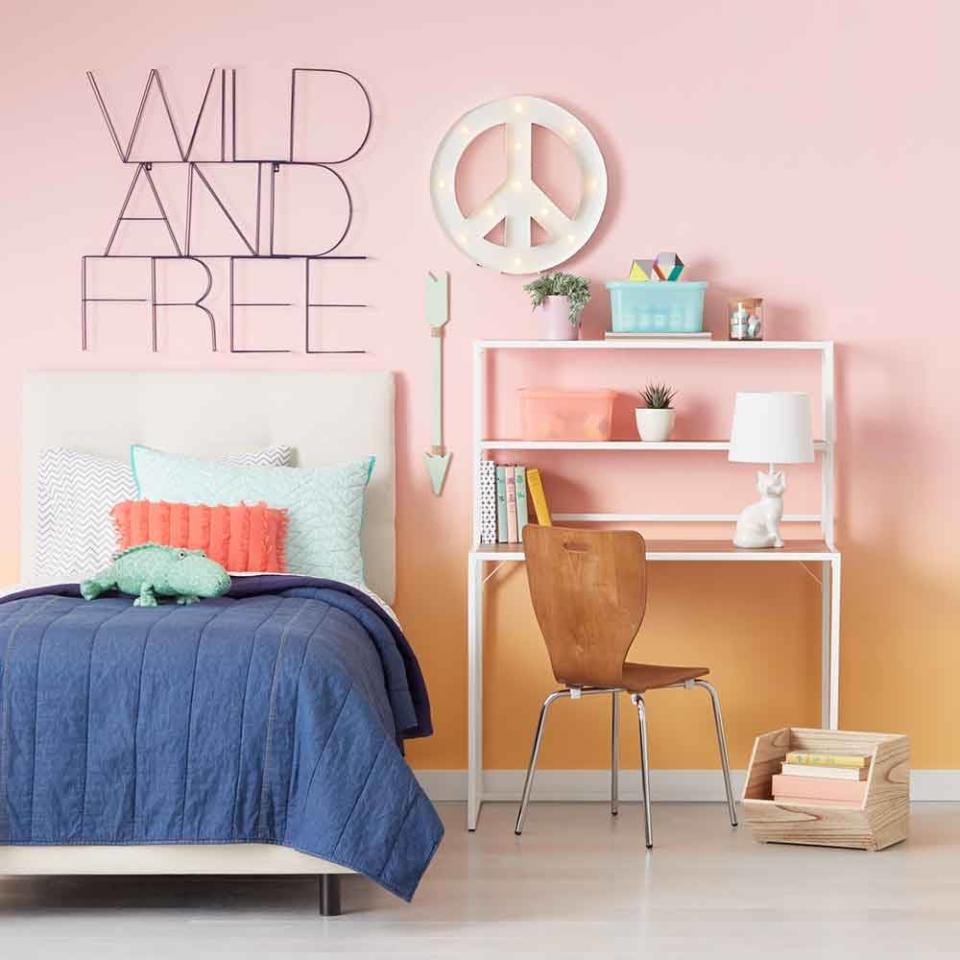
Photo: Target
Parents today are simply looking for “less constrictive options” for their kids in terms of gender and colors, Christia Spears Brown, author of Parenting Beyond Pink and Blue, told the Star-Tribune. “It’s not about rejecting pink. It’s saying, ‘Does everything I own have to be pink or purple?’” she said. “There’s a real disconnect between telling girls they can be anything when they grow up and yet the only thing marketed to them comes in one color.”
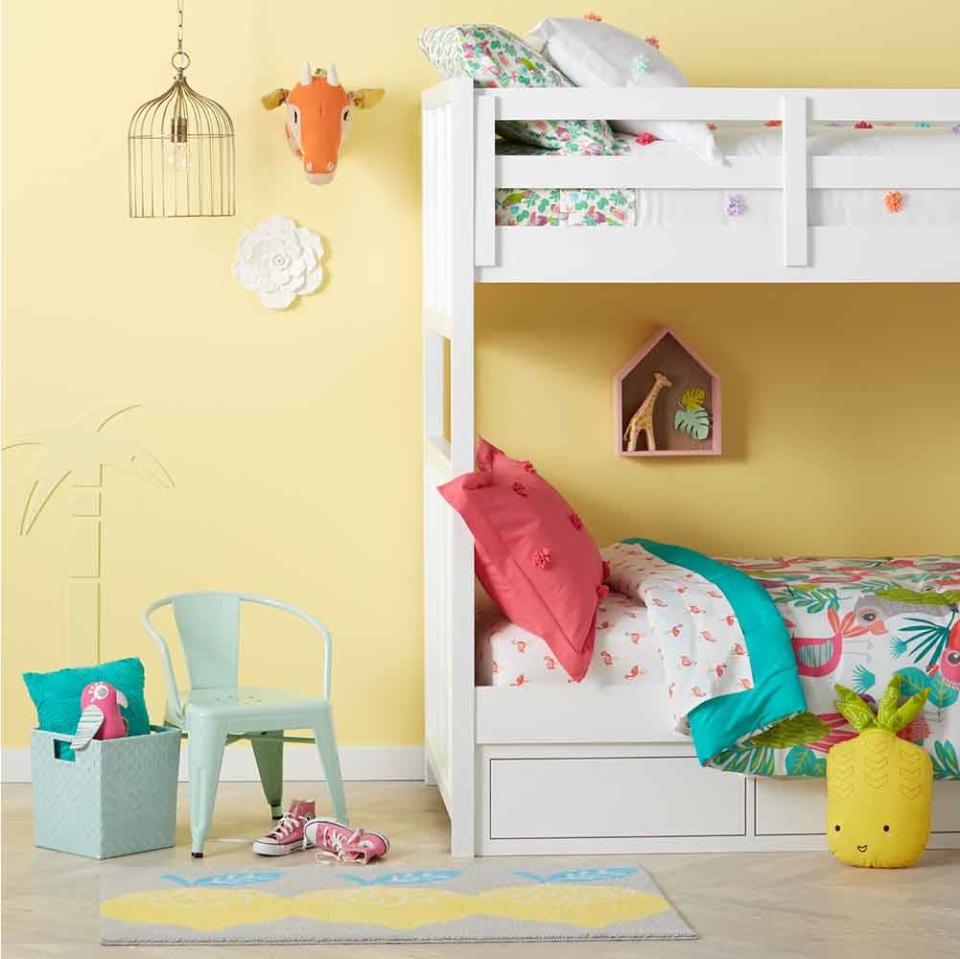
Photo: Target
Indeed the 12 “whimsical themes,” including “Tropical Treehouse,” “Stellar Station,” and “Ocean Oasis,” that Target describes in Pillowfort’s new line appear to appeal to boys and girls alike — with an eye toward flexibility to change things up in the future as well. “With so many options [in Pillowfort’s 1,200-item line],” Target boasts in its statement, “parents and kids can mix, match, and make updates to the space as the youngsters grow over time.” It’s a look that appeals to fans on Facebook, some of whom are already praising the line. “Finally some great color to work with! Love the orange!” declared one commenter, while another added, “I love this idea. I don’t want to raise my kids thinking colors have genders.”
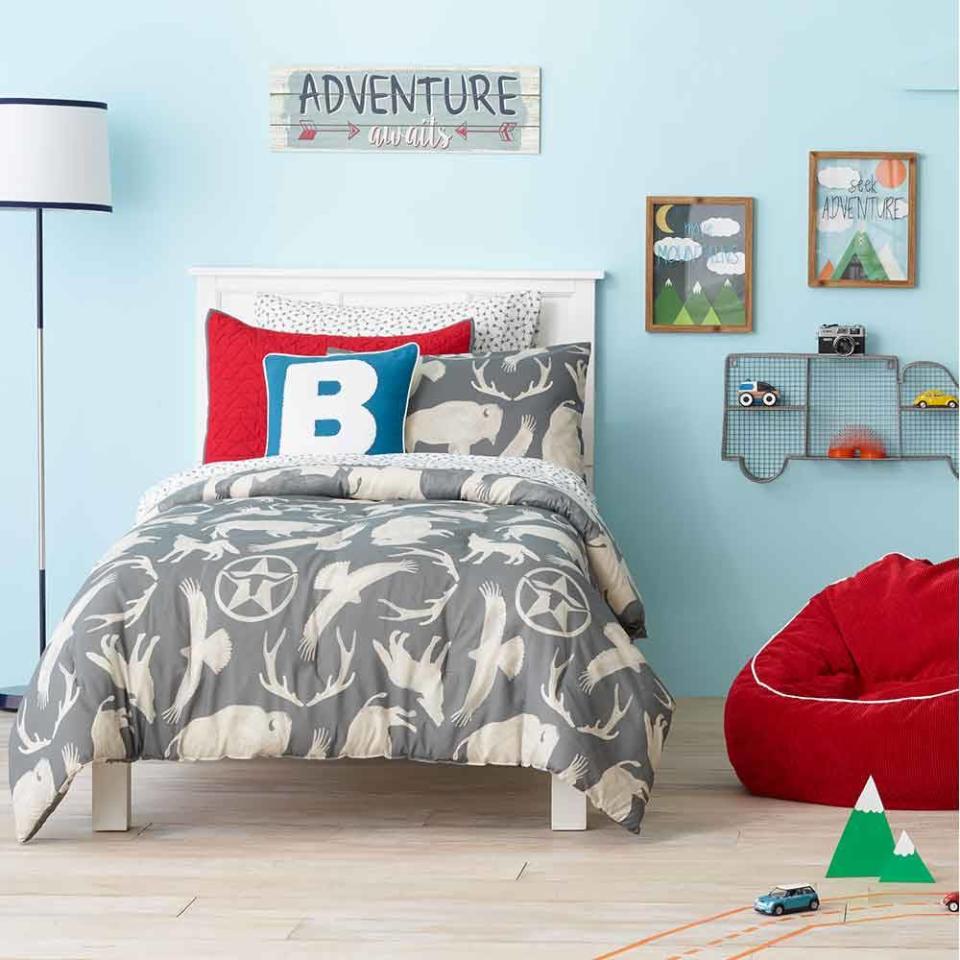
Top photo and above: Target
Please follow @YahooParenting on Facebook, Twitter, Instagram, and Pinterest. Have an interesting story to share about your family? Email us at YParenting (at) Yahoo.com.

